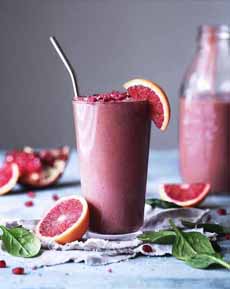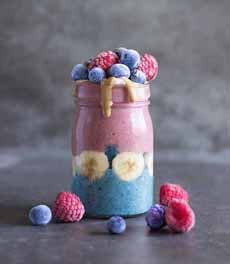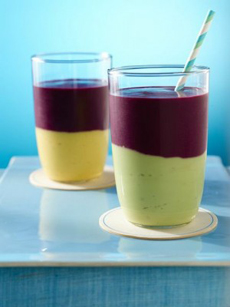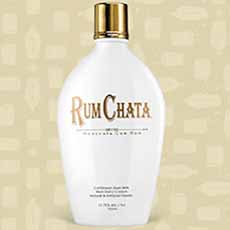History Of Smoothies & Smoothie Recipes For Global Smoothie Day
|
Love smoothies? October 3rd is Global Smoothie Day, A beverage of fruit and yogurt with the consistency of a milkshake, but much healthier. While the first smoothies marketed in the U.S. were combinations of fruit and fruit juice, yogurt was later added to the recipe. The concentration of calcium and beneficial bacteria in the yogurt, blended with the fiber and vitamins in the fruit, creates a guilt-free snack. Wheat germ, grains*, and other nutrients can be added. But for a starter recipe, just blend 1/2 cup of diced fruit with 3/4 cup of yogurt and 1 cup of milk. > National Smoothie Day is June 21st. > Global Smoothie Day is October 3rd. > Check out the 10 smoothie recipes below. > The year’s 10 yogurt holidays. > The different types of yogurt: a photo glossary. The smoothies that are popular in the U.S. today, made with yogurt and fruit, are an American invention, although they are an evolution of puréed fruit beverages that date back centuries. Mediterranean and Eastern cultures have long served pureed fruit drinks. The concept jumped from there to South America, where it became a type of “fruit slush,” with juice and fruit puréed with ice. The concept of what became known as the smoothie first appeared around the 1930s when health food stores on the West Coast began adapting Brazilian recipes for puréed fruit drinks [source]. With the invention of the blender and affordable home refrigerators in the 1920s and 1930s, many American households could now enjoy blended drinks at home. But “smoothie” was not yet a nationally-known term. In 1970 a lactose intolerant man named Steven Kuhnau began to make shakes from fresh fruit, fruit juice, nutrients, and ice. In 1973 he opened a health food store, naming his business after the drink he had heard from hippies: “The Smoothie King.” In 2018, the company opened its 1001st store. Prior to Kuhnau’s “Smoothie King,” the term “smoothie” was used beyond beverages, to describe everything from bras and girdles, to ballpoint pens and car paint. There was even a band named “The Smoothies” [source]. (The original brand folded in 1960, and now there’s at least one other with the name.) Today, you’ll find smoothies in non-fruit flavors (chocolate, peanut butter, vanilla); but they mostly include crushed ice, frozen fruit, and a sweetener (like the Brazilian “fruit slush”); and often contain yogurt or milk. As soon as a newly fashionable ingredient comes along—chia, hemp seeds, matcha, nondairy milk, etc.—you’re bound to find it in a smoothie near you. ________________ *Oats, millet, and quinoa, among other grains, add a protein punch as well as fiber to smoothies. They also add more creaminess. |
|
|
|
CHECK OUT WHAT’S HAPPENING ON OUR HOME PAGE, THENIBBLE.COM.
|
||







